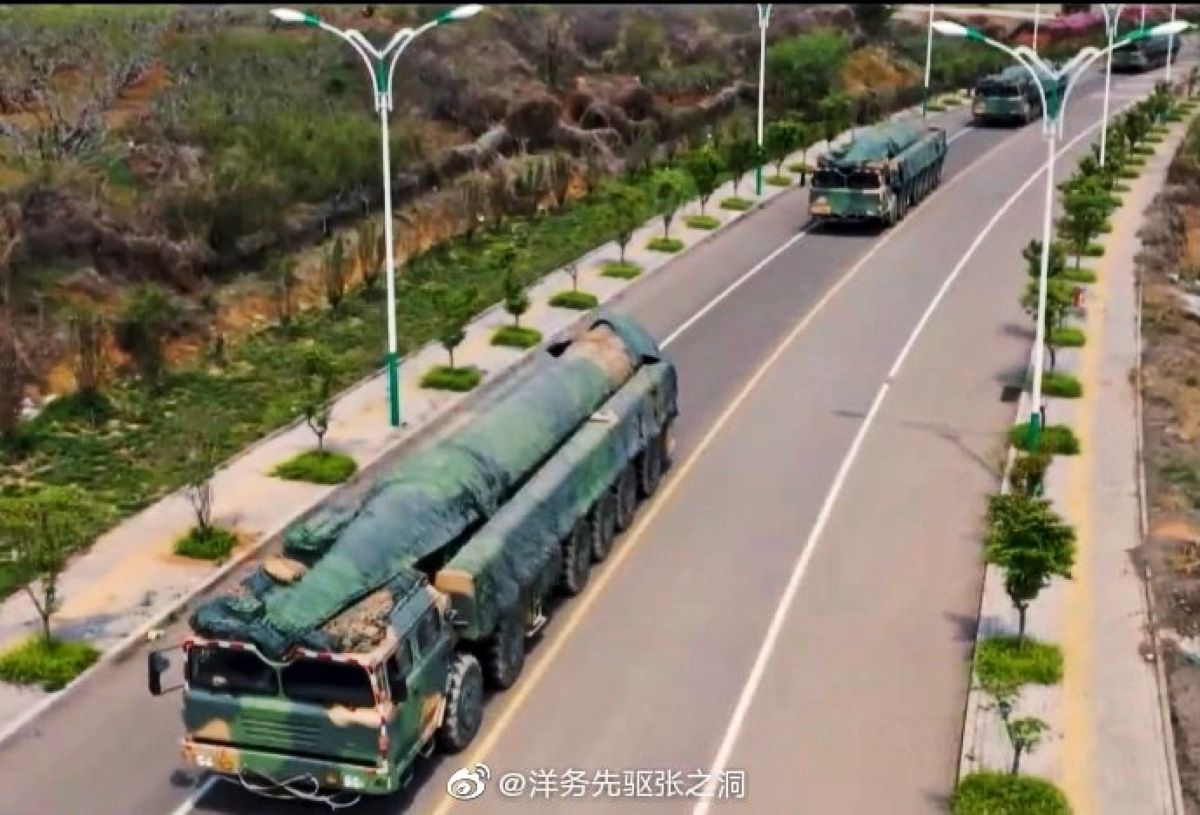China has claimed that its hypersonic weapons technology is about to undergo a groundbreaking upgrade, driven by a new project focused on enhancing hypersonic glide vehicles (HGVs).
According to the Hong Kong-based SCMP, scientists involved in this initiative are developing a novel HGV that employs a “skipping stone” trajectory, allowing it to dive into and leap out of the atmosphere at speeds surpassing Mach 15.
This progress has been facilitated by a new solid-fuel booster engineered for multiple ignitions. Hypersonic glide vehicles, which maneuver and glide at hypersonic speeds, offer precise control over a missile’s trajectory post-launch.
The updated skipping stone trajectory greatly enhances the missile’s range, boosting it by more than one-third. This improvement transforms the operational scope of hypersonic gliders from regional conflicts to global missions.
The Chinese research team has outlined the advantages of this new generation of hypersonic weapons in a recent paper published in the Chinese Journal of Astronautics.

The key benefits include extended range, high maneuverability, and unpredictability — all features that make these weapons formidable and adaptable in modern warfare.
The concept of hypersonic glide vehicles is deeply rooted in historical proposals. In the late 1940s, Qian Xuesen, a Chinese rocketry pioneer, envisioned hypersonic gliders carried by rockets that would glide back to Earth powered only by aerodynamic lift.
This concept, known as the Qian Xuesen trajectory, forms the basis for modern Chinese hypersonic glide weapons like DF-17 missiles.
Another historical figure, Eugen Sänger, an Austrian scientist during World War II, proposed the Silbervogel (silver bird), which has a trajectory that resembles the skipping stone flight path.
Amid LCA MK-2, MMRCA & AMCA Delays, Indian Air Force To Augment, Upgrade Its MiG-29 Fighter Fleet
Despite its initial theoretical nature, Sänger’s design has significantly influenced contemporary advancements in hypersonic technology. The Chinese team has made strides in optimizing the Sänger trajectory for modern hypersonic glide vehicles.
Their new aircraft design, featuring a slender body with integrated wings, has been tested through numerical simulations and wind tunnel experiments. By repeatedly leaping above the atmosphere, the aircraft is projected to reach speeds up to Mach 20 and maintain Mach 17 for more than half an hour.
This design additionally enjoys decreased atmospheric friction and a 50% reduction in maximum heat flux compared to unpowered gliders, thereby alleviating the demands placed on the thermal protection system.
A Growing Threat To US Defenses?
China’s new advancements in hypersonic weaponry may pose a serious challenge for the United States, which is facing difficulties in developing and implementing its hypersonic systems.
Despite significant investments from the US Department of Defense to counter China’s increasing dominance in this area, China’s recent technological advancements in hypersonic weapons may provide the country with a notable strategic edge.
According to SCMP, Chinese military simulations suggest these advanced weapons could be launched from the Gobi Desert, with the capability to effectively target and destroy US aircraft carrier fleets and military bases in the South China Sea.
US defense analysts have also recognized this potential. A 2023 Pentagon assessment indicated that China’s DF-27 hypersonic missile could reach as far as Hawaii, evade US missile defenses, and specifically threaten US aircraft carriers.
Such capabilities could potentially neutralize US naval forces in the Pacific, thereby altering the strategic balance and limiting US support options for Taiwan in the event of a Chinese invasion.

The challenge with these hypersonic systems lies in their remarkable maneuverability throughout their flight path. Unlike traditional missiles, their trajectories can alter in flight, making them difficult to track and intercept.
Further, these weapons operate in an atmospheric zone between slower subsonic missiles and faster intercontinental ballistic missiles.
This intermediate altitude makes tracking and defense more difficult since existing systems do not provide sufficient coverage in this crucial area—a challenge faced by US and allied forces, and Russia and China.
Nonetheless, although China’s new hypersonic glider has the potential to traverse the globe, there are several obstacles to the complete realization of this technology. The technology has not yet completely satisfied combat requirements, especially regarding trajectory flexibility and the ability to evade certain airspace.
Realizing this will necessitate incorporating additional systems, such as reaction control and sophisticated active and passive steering methods, which pose considerable challenges for flight control.
However, China is conducting extensive tests to address these issues. It remains to be seen how long it will take for this technology to move from development to implementation and whether it will ultimately be effective in combat scenarios.
- Contact the author at ashishmichel(at)gmail.com
- Follow EurAsian Times on Google News




